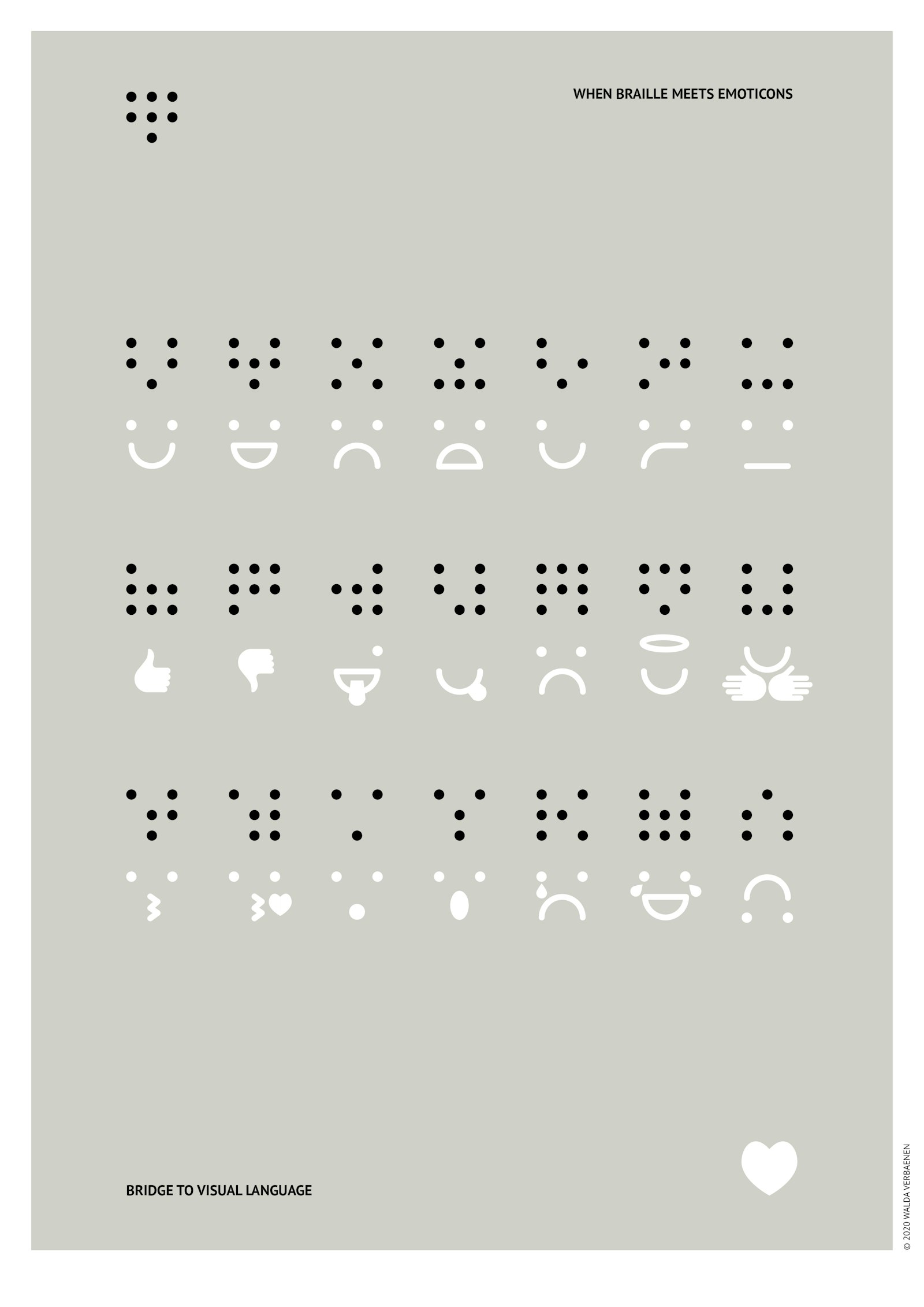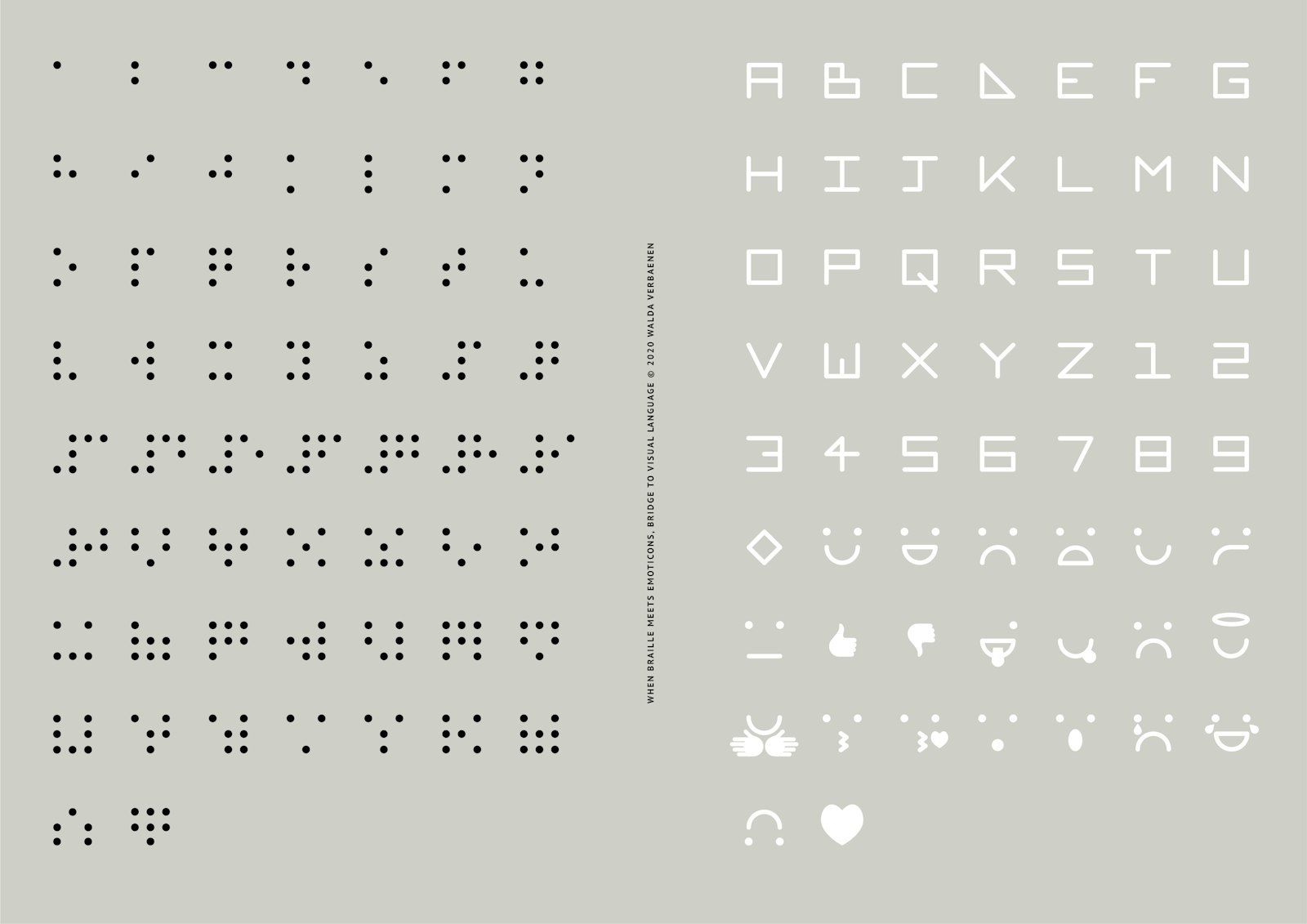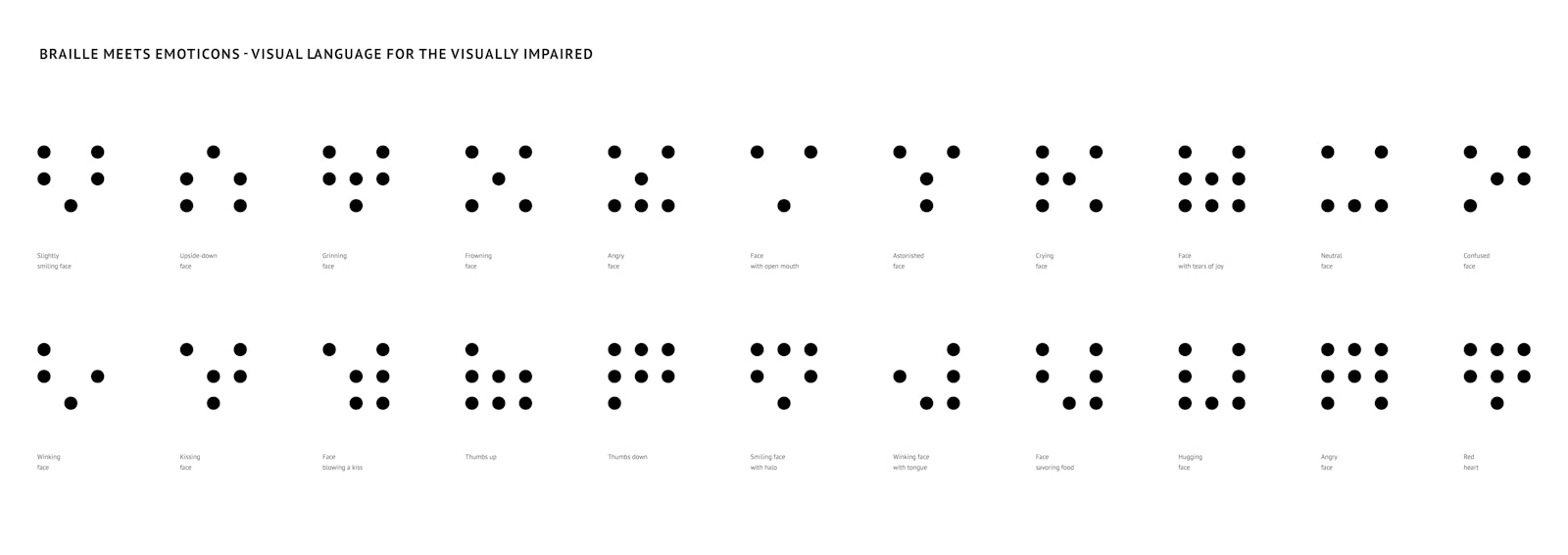This alphabet tries to make a bridge between a visual language and visually impaired and/or blind people, and appears as a 'Braille Dingbats'.
Happy, enthousiastic, sad, combinations of both,... Emoticon images are universal images, used by people who can see, and therefore immediately can show in one character how they feel.
But what about people who can see poorly or not? People who have never seen what a face looks like?
People who are using the Braille language are forced to use the 26-letter alphabet to describe their emotions.
This insight was a starting point for setting up an experimental addition to the existing Braille alphabet, an alphabet based on our emoticons, converted into a ‘dot’ language that characterizes Braille.
The original Braille alphabet is built within a grid of 6 dots, and Braille numbers are fitting in a grid of 12 dots.
This addition to the Braille alphabet is based on a grid of 9 dots to avoid confusion. 22 of the most common emoticons have been translated into this new Braille grid.
The braille 'emoticon' letters are logically structured and could therefore be explained to people who are visually impaired or blind.
It has been made for the moment as a typographical experiment, and will be further explored.
- Designer
- Walda Verbaenen
Judges Choice: Juan Pastor Rovira







